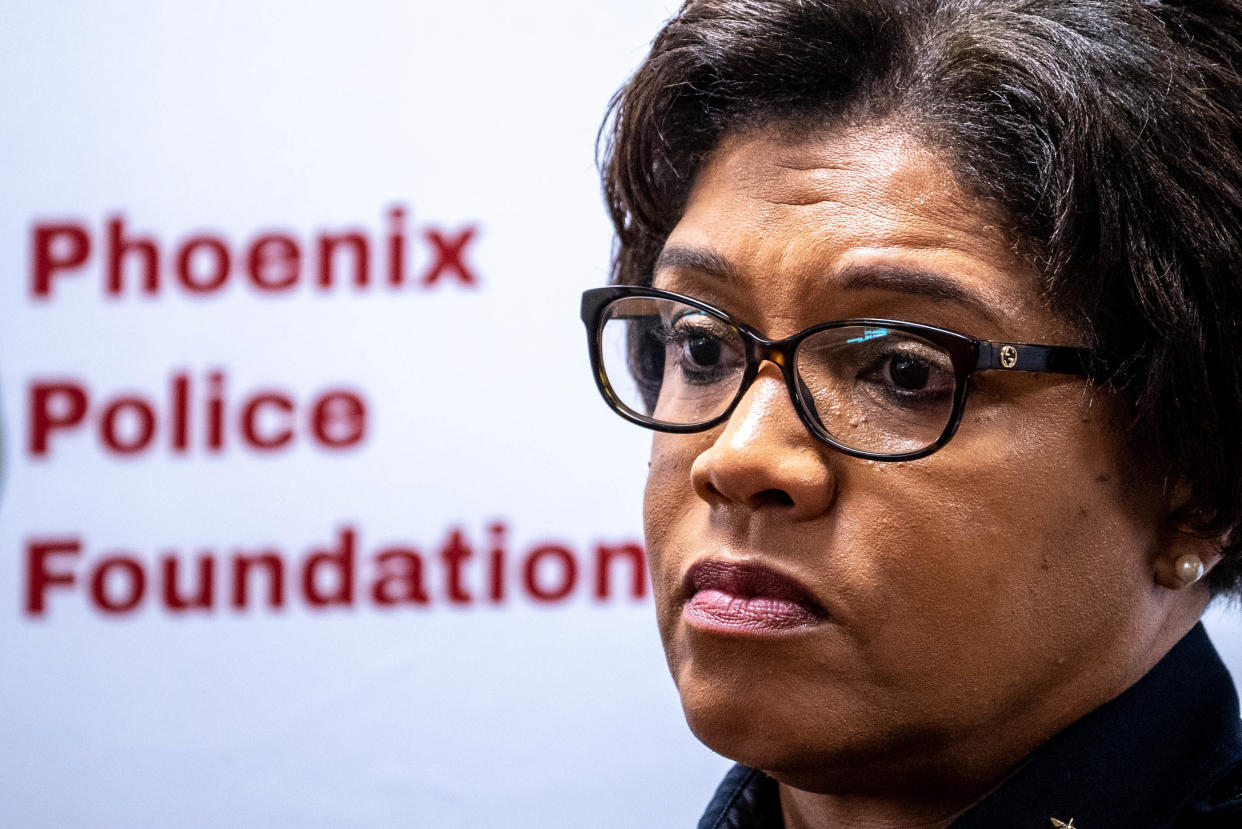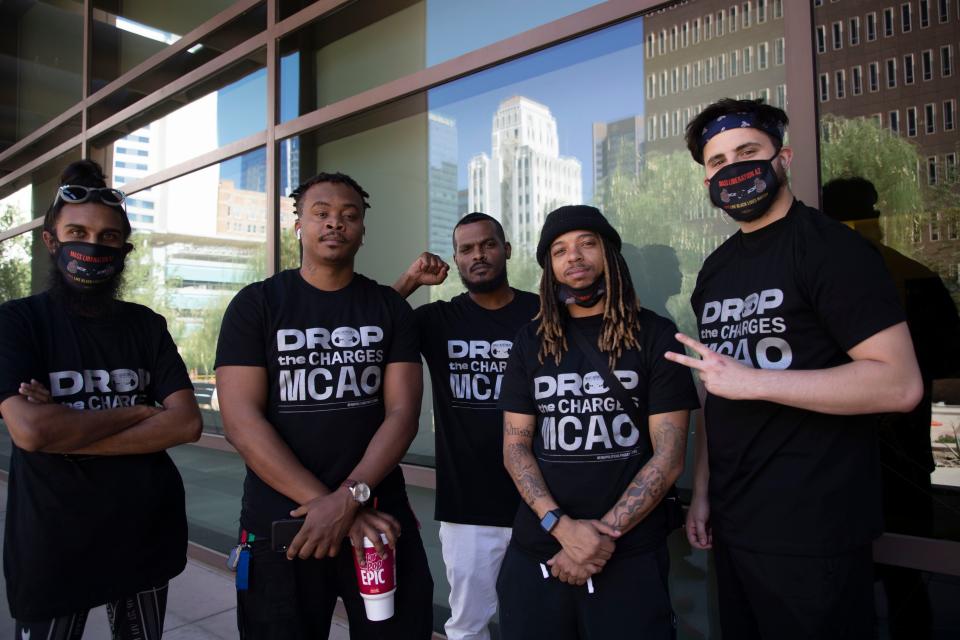Revelations in bungled protesters case show Phoenix Police stink at crisis management

As controversies go, the 2020 charging of protesters with statutes meant for gang members made its most explosive and consequential impact in the 8 to 10 months that followed.
Raised eyebrows became intense backlash after it was revealed that Phoenix Police and Maricopa County prosecutors had presented embellished and uncorroborated material to a grand jury to secure the more serious, felony charges of assisting a criminal street gang.
Investigations led to administrative leave for a police sergeant and the lead prosecutor (who was eventually fired). Three assistant police chiefs were demoted, and the two agencies were left with egg on their faces.
That should have closed the book – until recent revelations about the bungling of assigned blame and the muddling of who knew what when.
Lawsuit suggests the chief knew more than she said
Those missteps continue to embarrass the police department and the city of Phoenix – even if the revelations don’t change our understanding of how the call was made to prosecute protesters as gang members or who made it, nor did they uncover wrongdoing by anyone else.
If anything, they expose the entities’ rather anemic attempts at crisis management, including Police Chief Jeri Williams.
The latest disclosures come by way of dogged reporting from ABC15’s Dave Biscobing, based off a lawsuit filed by the three disciplined assistant chiefs that in essence claims they were wrongfully demoted and made a scapegoat by Williams and others.
A year later: Justice investigation into Phoenix police continues
They included secretly taped recordings involving calls that two of the assistant chiefs had with Williams’ second-in-command, in which the executive assistant chief acknowledged that Chief Williams knew – or should have known – of the controversial charging decision months before she publicly said she found out.
They also include screenshots of purported exchanges of text messages by Williams and her underlings about the fallout of the case on an encrypted message app – one that automatically erases messages, as quickly as within seconds of being read.
Did Williams throw her staff under the bus?

Most damning was that the screenshots showed some message exchanges occurred in 2021, when Williams, through a press statement by the city, earlier said she had stopped using the Signal app in 2020 and instructed her executive staff to do the same.
The effect was to insinuate that the police chief:
used the app to sidestep official channels to discuss sensitive police matters without leaving a record;
knew of the protesters case months before she said she learned of it and did nothing; and
she saved her own job by throwing the assistant chiefs under the bus. (In claiming she was left out of the loop by them, Williams got but a one-day suspension and kept her reputation relatively intact. The independent report didn’t dwell on when and how she learned of the case.)
A lot of smoke, but not necessarily a smoking gun.
Importantly, there’s been no shred of evidence to date that Chief Williams knew of the charging decision until some time after the grand jury handed up the indictments of the protesters.
The three assistant chiefs were disciplined – seemingly harshly so and possibly without proper due process –because they had attended a meeting with the prosecutor in which gang charges were contemplated against the protesters but failed to alert Williams.
According to their attorney, Stephen Montoya, the assistant chiefs immediately after the meeting notified Executive Assistant Chief Mike Kurtenbach of the plan, as the chain of command dictates.
Use of the Signal app dings her credibility
Whether Kurtenbach passed it on to Williams or she found out much later through staff briefings or media coverage is largely immaterial except that it better allows her to distance herself from the controversy and to pass judgment on it as a “flat-out ... bad idea.”
It’s unchallenged that she did nothing in response until the case blew up and brought heat on the county and the city. It was clearly a lapse in leadership, viewed then as is now.
Her use of Signal is a bigger concern (the subject of another discussion at another time). Having high-ranking public officials on an app that can routinely erase messages without a record only sows public mistrust.
Chief Williams’ use of the app – and the conflicting accounts of when she stopped using it – doesn’t help us better understand how much she knew of the protesters’ case or when. But it does ding her credibility, and legacy, as she finishes her last days in an otherwise strong career.
It certainly undermines her standing with the rank-and-file.
This takes the spotlight away from the worse sin
Worse, the revelations of the past few weeks take the spotlight away from the bigger player in the charging decision mess: The Maricopa County Attorney’s Office.
Police arrested the protesters and booked them on misdemeanor counts – unlawful assembly, criminal damage, obstructing a roadway – related to actions captured on video, as well as on several low-level felony counts.
It was not a difficult case to prove.
But what formal charges to bring – and what evidence to present to a grand jury to indict on those charges – is the purview of prosecutors, not cops. Phoenix Police’s assistant chiefs should have challenged the unprecedented use of gang charges, but ultimately, prosecutors made the call.
The County Attorney’s Office directed the case and decided to up the ante with more serious, and dubious, felonies.
That was, and remains, the original sin.
Reach Abe Kwok at akwok@azcentral.com. On Twitter: @abekwok.
We can agree, or agree to disagree — but only with the support of readers like you. Please sustain local journalism and subscribe to azcentral.com today.
This article originally appeared on Arizona Republic: Phoenix Police have egg on their face again in bungled protesters case

